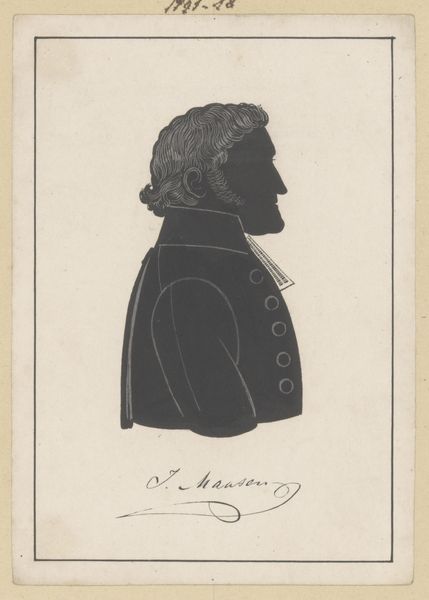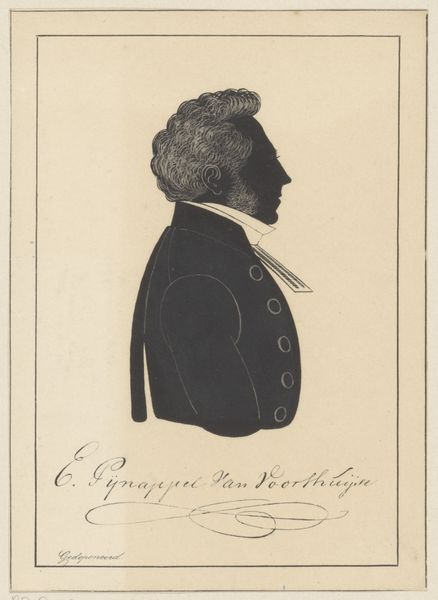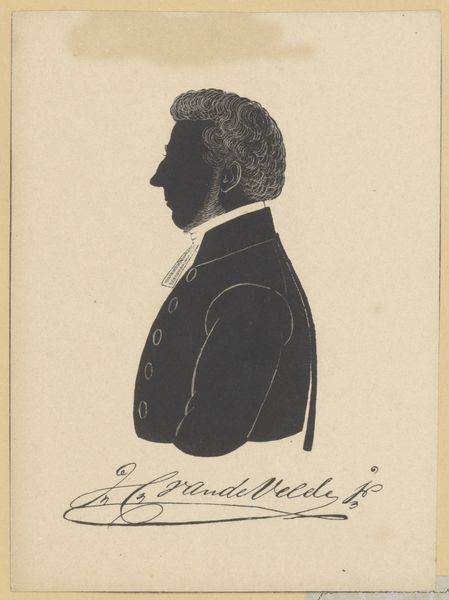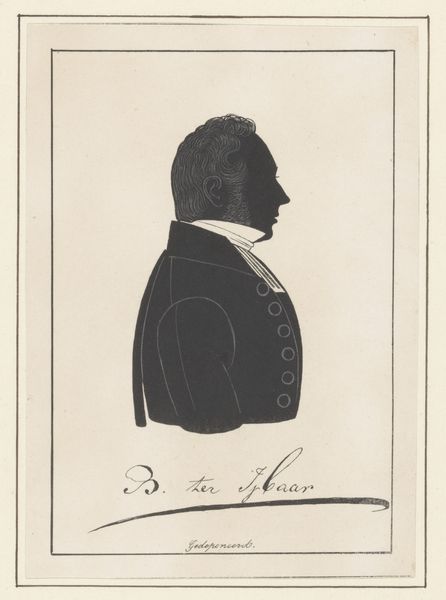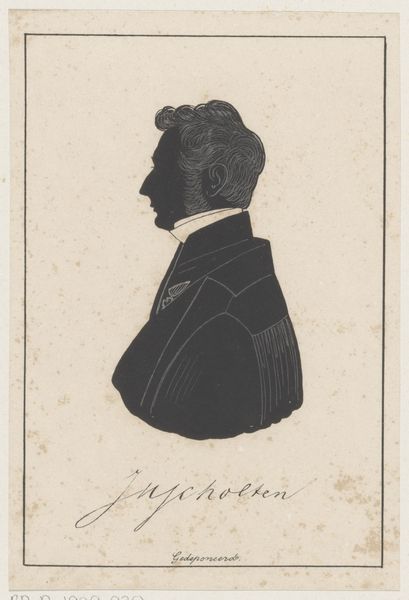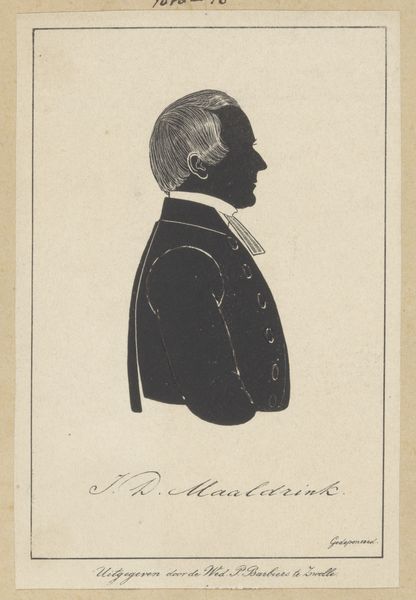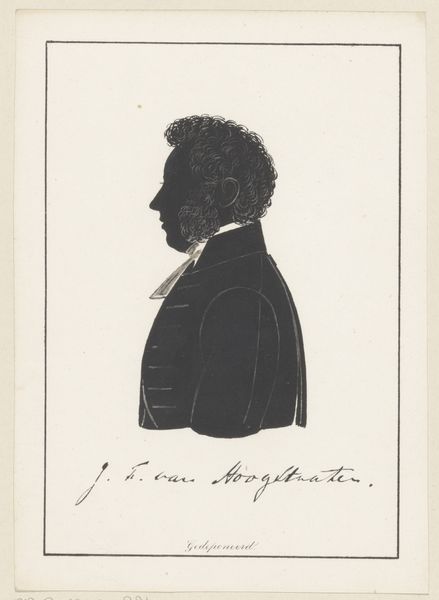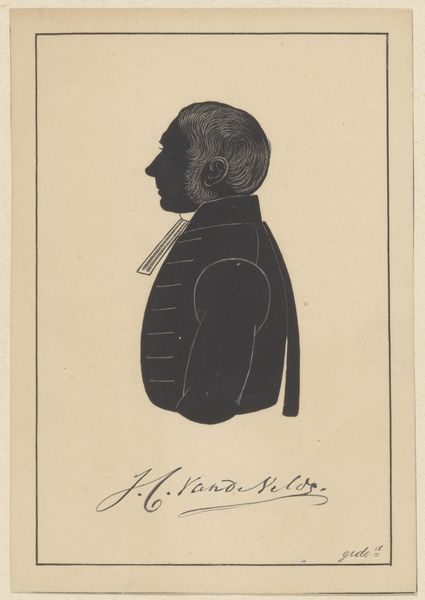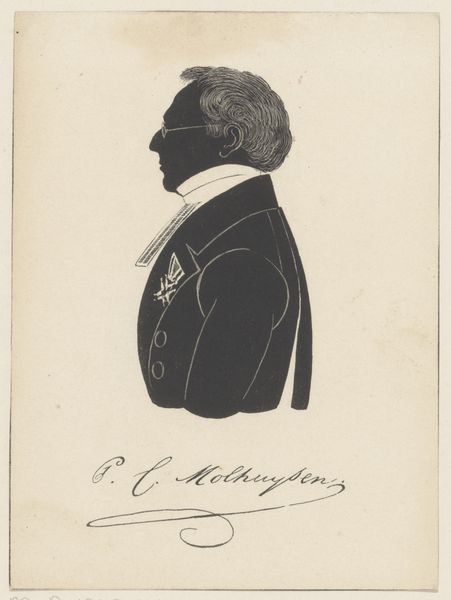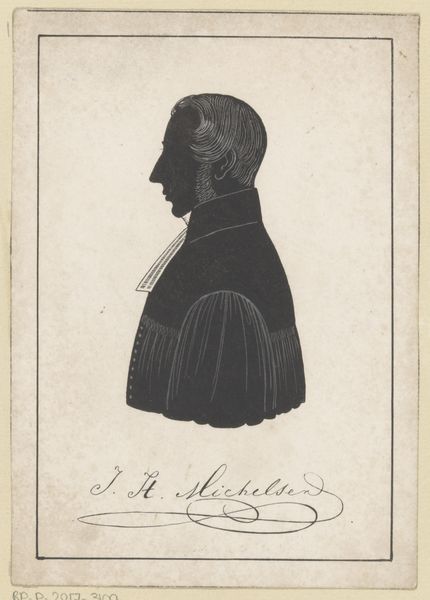
drawing, print
#
portrait
#
pencil drawn
#
drawing
#
16_19th-century
# print
Dimensions: height 152 mm, width 108 mm
Copyright: Rijks Museum: Open Domain
Editor: This is Pieter Barbiers’ silhouette portrait of J. van Rijn van Alkemade, dating from between 1848 and 1862, currently held at the Rijksmuseum. The stark contrast really grabs my attention; it's simple yet conveys so much about the subject's stature. What do you see when you look at it? Curator: Initially, one observes the meticulous application of the silhouette technique. The artist expertly uses positive and negative space to define form. Note how the precision-cut details – the curls of hair, the ornate collar, the buttons on the jacket – these elevate it beyond a mere outline. Editor: It’s amazing that he achieved such detail with a simple silhouette! Is the stark black and white intentional? Curator: The monochrome palette eliminates distraction, directing focus to line, shape, and form. Observe how the artist manipulates the viewer's eye through contrasts of dark and light, highlighting the man's strong profile and creating an image that is at once both forceful and restrained. We are asked to focus on the intrinsic forms, and in turn what they communicate. Editor: So the medium itself becomes part of the message? I hadn’t thought of that. Curator: Precisely. The limitation becomes the artwork’s strength. Does analyzing the aesthetic elements shift your initial perception of the artwork? Editor: Absolutely! I’m seeing it now as more of a technical accomplishment. The limitations really underscore Barbiers’ skill. Curator: Indeed. By examining the formal elements, one gains insight into the artist's decisions, creative process, and the image's aesthetic impact.
Comments
No comments
Be the first to comment and join the conversation on the ultimate creative platform.

